News
Chris Johnson Selected as SIAM Fellow
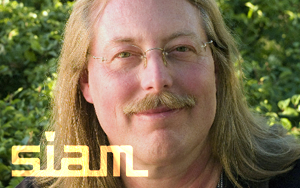 SCI Director Dr. Chris Johnson has been selected by the Society for Industrial and Applied Mathematics (SIAM) to be honored as a SIAM Fellow for his contributions to Scientific Computing and Visualization. The SIAM Fellow is a new honor designed to recognize a member's outstanding contributions to the fields served by SIAM. Dr. Johnson is among the initial class to be selected for this honor. Initial Fellows were selected from among those SIAM members for which certain previous recognition places them clearly among those intended to be recognized by the program. For more information see: SIAM Fellows Program.
SCI Director Dr. Chris Johnson has been selected by the Society for Industrial and Applied Mathematics (SIAM) to be honored as a SIAM Fellow for his contributions to Scientific Computing and Visualization. The SIAM Fellow is a new honor designed to recognize a member's outstanding contributions to the fields served by SIAM. Dr. Johnson is among the initial class to be selected for this honor. Initial Fellows were selected from among those SIAM members for which certain previous recognition places them clearly among those intended to be recognized by the program. For more information see: SIAM Fellows Program.
Huy Vo Awarded NVIDIA Fellowship
 SCI graduate student Huy Vo has been awarded an NVIDIA Fellowship for 2009-2010. Huy is one of just ten students in the country to receive this honor. The NVIDIA Fellowship Program provides funding to Ph.D. students who are conducting research on topics which are expected to lead to major advances in the graphics and digital media industry, and are investigating innovative ways of leveraging the power of graphics hardware. Huy Vo's graduate adviser is SCI faculty member Dr. Cláudio T. Silva.
SCI graduate student Huy Vo has been awarded an NVIDIA Fellowship for 2009-2010. Huy is one of just ten students in the country to receive this honor. The NVIDIA Fellowship Program provides funding to Ph.D. students who are conducting research on topics which are expected to lead to major advances in the graphics and digital media industry, and are investigating innovative ways of leveraging the power of graphics hardware. Huy Vo's graduate adviser is SCI faculty member Dr. Cláudio T. Silva. For more information about the award, please see the NVIDIA press release "NVIDIA Fellowship Results for 2009"
SCI and Moran Eye Center Collaboration Completes Map of Eye Neurocircuitry
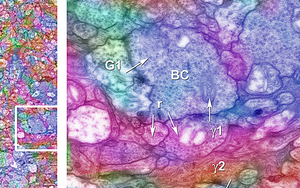 A SCI research team, lead by Dr. Tolga Tasdizen and Dr. Ross Whitaker, in collaboration with Dr. Robert Marc and his team at the Moran Eye Center have recently completed a 3D neurocircuitry map of every cell in the retina of a rabbit's eye. This data is a huge milestone on the way to building a complete description of the neurocircuitry that allows mammals to see. By comparing healthy samples with those undergoing disease processes, neuroscientists hope to develop a detailed understanding of how many diseases cause blindness and hopefully find ways to stop or even reverse the deterioration. The Neural Circuit Reconstruction Toolset used to construct this unprecedented map from thousands of individual electron microscope images was developed here at the SCI Institute and is currently available for download for free. The massive 20GB dataset will also eventually be made available on the web.
A SCI research team, lead by Dr. Tolga Tasdizen and Dr. Ross Whitaker, in collaboration with Dr. Robert Marc and his team at the Moran Eye Center have recently completed a 3D neurocircuitry map of every cell in the retina of a rabbit's eye. This data is a huge milestone on the way to building a complete description of the neurocircuitry that allows mammals to see. By comparing healthy samples with those undergoing disease processes, neuroscientists hope to develop a detailed understanding of how many diseases cause blindness and hopefully find ways to stop or even reverse the deterioration. The Neural Circuit Reconstruction Toolset used to construct this unprecedented map from thousands of individual electron microscope images was developed here at the SCI Institute and is currently available for download for free. The massive 20GB dataset will also eventually be made available on the web.
VisTrails Provenance Explorer for Maya Wins Utah Innovation Award
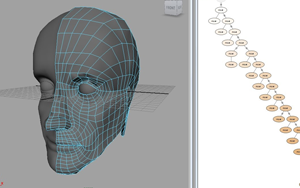 Congratulations are in order to the VisTrails team. Their Provenance Explorer for Maya has won the Utah 2009 Innovation Award.
Congratulations are in order to the VisTrails team. Their Provenance Explorer for Maya has won the Utah 2009 Innovation Award.VisTrails Inc., a SCI spin off company, was one of just nine companies to be awarded a Utah Innovation award for 2009. This award is designed to recognize Utah companies that make important innovations in their industries. A committee of more than 70 experts from private industry, government and higher education selected the award winners. Vistrails, Inc. was recognized in the Enterprise B-2-B Software category for it's Provenance Explorer for Maya.
For more information see: SL Tribune - "Utah's innovative spirit on display in Salt Lake City"
NSF Open Wildland Fire Modeling
 SCI, in collaboration with the National Center for Atmospheric Research (NCAR) and the University of Colorado at Denver have teamed up to tackle the challenges associated with modeling the complexities of wildfires.
SCI, in collaboration with the National Center for Atmospheric Research (NCAR) and the University of Colorado at Denver have teamed up to tackle the challenges associated with modeling the complexities of wildfires.www.openwfm.org
The losses associated with wildfires and the wish to understand, predict, and control wildfires have driven researchers to create ever more detailed and powerful computational models. However, the necessary sophistication and realism requires scientific computing and analysis processes of a complexity that has itself become a hindrance to further progress and education. In addition, the research is done by geographically disperse interdisciplinary groups, and making their models interoperate is a challenge. This project strives to overcome this complexity and challenges to collaboration by state-of-the-art software engineering, visualization, and collaboration tools. The results will find applications in wildfire research, education, training, and management.
Greg Jones Voted Top 100 vSpring Capital Venture Entrepreneur for 2009
 Congratulations go out to our Associate Director Greg Jones who was recently designated a v|100 - vSpring Top 100 Venture Entrepreneur. The v|100 designation is given to those individuals voted most likely to lead a successful business venture in Utah within the next few years. The v|100 is designed to help entrepreneurs and vSpring Capital establish and cultivate relationships among top CEO and CTO talent in the region. Members of this elite executive community are chosen through a peer-nominated and peer-selected process. Top members of the Utah business community were surveyed by a vSpring team to nominate the top 100 ventrue entrepreneurs in Utah. 2009 marks the sixth year of the v|100 Community. Greg was also selected as a v|100 member in 2008 and 2005.
Congratulations go out to our Associate Director Greg Jones who was recently designated a v|100 - vSpring Top 100 Venture Entrepreneur. The v|100 designation is given to those individuals voted most likely to lead a successful business venture in Utah within the next few years. The v|100 is designed to help entrepreneurs and vSpring Capital establish and cultivate relationships among top CEO and CTO talent in the region. Members of this elite executive community are chosen through a peer-nominated and peer-selected process. Top members of the Utah business community were surveyed by a vSpring team to nominate the top 100 ventrue entrepreneurs in Utah. 2009 marks the sixth year of the v|100 Community. Greg was also selected as a v|100 member in 2008 and 2005.
SCIRun Version 4.0 Released
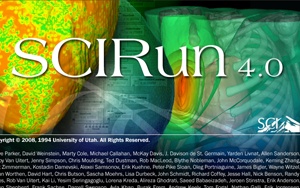 The NIH/NCRR Center for Integrative Biomedical Computing (CIBC) is pleased to announce the release of the 4.0 version of the SCIRun software suite. SCIRun is a problem solving environment for biomedical problems that is based on a dataflow paradigm. The new version contains many bug fixes, a new interface and many new modules. The new 4.0 version is now available as binary download for both OS X and Windows XP/Vista as well as a source download for other platforms.
The NIH/NCRR Center for Integrative Biomedical Computing (CIBC) is pleased to announce the release of the 4.0 version of the SCIRun software suite. SCIRun is a problem solving environment for biomedical problems that is based on a dataflow paradigm. The new version contains many bug fixes, a new interface and many new modules. The new 4.0 version is now available as binary download for both OS X and Windows XP/Vista as well as a source download for other platforms.To download the new SCIRun version 4.0, go to our CIBC Software portal.
For questions and further information on the 4.0 SCIRun release, please visit the CIBC webiste software page.
SCI Research on Display at SLC Library
 The SCI Institute, in partnership with the Department of Radiology has been working towards new goals in public outreach. A three-part exhibit is now on display at the Salt Lake Public Library and includes hands-on multi-media, Q and A from the University's leading radiologists, a four lecture series, and a 20 piece gallery display which will run through December. Overall, it has been a great success and has opened the public eye to a glimpse of what we are working on.
The SCI Institute, in partnership with the Department of Radiology has been working towards new goals in public outreach. A three-part exhibit is now on display at the Salt Lake Public Library and includes hands-on multi-media, Q and A from the University's leading radiologists, a four lecture series, and a 20 piece gallery display which will run through December. Overall, it has been a great success and has opened the public eye to a glimpse of what we are working on.Imaging Meets Electrophysiology
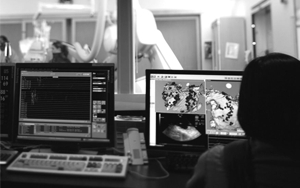 By Rob MacLeod, Professor and Associate Chair of Undergraduate Studies, Department of Bioengineering
By Rob MacLeod, Professor and Associate Chair of Undergraduate Studies, Department of BioengineeringAtrial fibrillation is the most common – and perhaps most insidious – form of heart rhythm disturbance, affecting 2.5 million Americans. While usually not life-threatening in its initial stages, the condition can eventually lead to a stroke or heart attack. Finding better ways to treat atrial fibrillation is the focus of a group of bioengineers in the College of Engineering who have teamed up with imaging physicists and physicians in the School of Medicine.
FEBio Profiled in BioMedical Computation
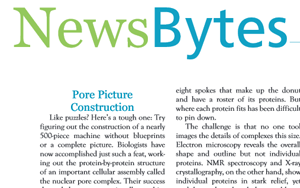 FEBio software profiled in Spring 2008 issue of BioMedical Computation. Download the pdf here
FEBio software profiled in Spring 2008 issue of BioMedical Computation. Download the pdf here
Greg Jones Named Associate Director of Scientific Computing and Imaging Institute
 The Scientific Computing and Imaging Institute is delighted to welcome Dr. Greg Jones back to the SCI Institute as our Associate Director. Dr. Jones previously served as our Associate Director from 2000 to 2005. He was then called by Governor Jon M. Huntsman to serve as the State Science Adviser to the Governor of Utah and Director of the Utah Economic Clusters Initiative from 2005 to 2007. He was awarded the 2007 Medal for Science and Technology by Utah Governor Jon M. Huntsman for his science leadership to the State of Utah. Most recently, he served as the Executive Director of Research at the Moran Eye Center.
The Scientific Computing and Imaging Institute is delighted to welcome Dr. Greg Jones back to the SCI Institute as our Associate Director. Dr. Jones previously served as our Associate Director from 2000 to 2005. He was then called by Governor Jon M. Huntsman to serve as the State Science Adviser to the Governor of Utah and Director of the Utah Economic Clusters Initiative from 2005 to 2007. He was awarded the 2007 Medal for Science and Technology by Utah Governor Jon M. Huntsman for his science leadership to the State of Utah. Most recently, he served as the Executive Director of Research at the Moran Eye Center.




